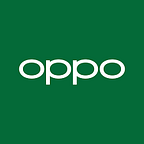From periscope-style dual camera technology to the motorized camera smartphone, we’re no stranger to industry firsts at OPPO. The Find N — our first foldable — is, clearly, not an industry first, but its sheer range of innovations it brought are transformative to the segment. Following the hugely positive response from last month’s launch, we decided to catch up with the product manager to get the inside story on the development of our first foldable.
It’s the first time we sat in the same room with Will Zhou, the Product Manager of OPPO Find N. When asked how he felt when seeing such a great amount of exposure and discussion regarding the company’s product, with a shy smile on his face he admitted that it was unexpected, ‘we were just making a phone in a way we’ve always wanted to, and now it proves that the users and the industry want the same.’
‘OPPO keeps exploring new possibilities in technology to provide innovative flagship experiences,’ Will explained, ‘as the industry grows to a steady growing stage and users have seen phones of great design and quality and creativity and, basically everything’.
The team’s most important task from day one is to tackle one issue plaguing almost all foldable devices. People simply seem to resent the inevitable creasing that occurs, and only worsens over thousands of folds.
Funnily enough — one thing that seems to conflict with the concept of a ‘foldable’ is that screens literally can’t be folded. You fold it, you break it. Therefore, to make a foldable smartphone, one will need a mechanism that makes both ends meet. It should fold a screen whilst in the meantime, not quite fold it. Who says physics is just science and no philosophy?
Like when folding paper, a hinge that folds a screen securely, seamlessly and tightly enough creates a deep, sharp crease in the middle. An unnoticeable crease then leads to a hinge that cannot make a full fold with a gap too huge to be ignored, which also makes the entire device bulkier than it should have been.
Yet the dilemma is exactly what the team signed up for. OPPO set off experimenting and exploring on its own feet rather than searching for quick solutions in the industry. ‘At the moment when you’re looking at the market, there are quite a bunch of different designs. It may seem easy but, again, it’s all about finding balance in what is a complex and sophisticated mechanism.’ Will, the Find N product manager told us, demonstrating several types of it.
‘So it’s almost against physics what we’ve been doing.’
‘Our self-developed Flexion Hinge is nothing like others. It is a piece of clockwork with 136 components, that’s approximately 3–4 times of what you normally find in a, let’s say, normal hinge.’ According to Will, the team made no less than dozens of attempts prior to the final form, all of which helped progress bit by bit and it took years to finally complete.
‘With so many components cramped in such a tiny space, the challenge is easily imaginable.’ Add more vital components and the chance for one thing to go wrong rockets. ‘We made countless alternations and modifications,’ said Will, ‘were we to go for a teardrop, or a U-shape, or is there anything in between? Even when that’s settled, there’re still a fair thousand of possibilities in the design of every tiny joint or spring…’
As a result, the crease of the Find N is 80% less noticeable (according to TÜV), and the wedge-shaped gap between the two halves when folded is eliminated so profoundly that as Pete Lau demonstrated on the launch, one may even snatch a piece of paper in it without dropping the paper. Or the phone.
To make foldable even more of a joy to use, OPPO took extra steps to ensure maximum user benefit that utilized the form factor.
‘One may wish to interrupt the folding or unfolding process to hover the screen at random angles so it becomes a mini laptop or stands still firmly to get timed selfies or take time-lapse photos, etc.’, OPPO engineers agreed that a smart device that signifies where the future lies should always have the ability to ‘integrate different ideas or needs so that it’s powerful and convenient enough once and for all, one device for as many purposes as possible.’
On why the product took years to complete, the team explained, ‘There’s endless rethinking and evolution to make lists checked, and ticks just keep coming up as we dive deeper into the users’ needs, which then make evolution happen again.’
‘Yes, it took a long time, because we’ve been doing a lot of the R&D on our own. It’s a process of exploring and grasping firmly in hand every inch of progress and improvement.’
Will referred to the development of the Find N as ‘unprecedentedly torturing’ yet meanwhile ‘encouraging, enticing’.
He acknowledged that ‘As OPPO’s self-development deepens in multiple key aspects like displays, NPUs, and other key components, etc., challenges and pains are all but certain. But through this, we get to understand every detail and get hands-on solving issues from their roots.’
The ability to solve problems with owned core technologies, OPPO believes, is where the next battle in the industry is. ‘And I think the breakthroughs in the Find N shows just how far we’ve come.’
